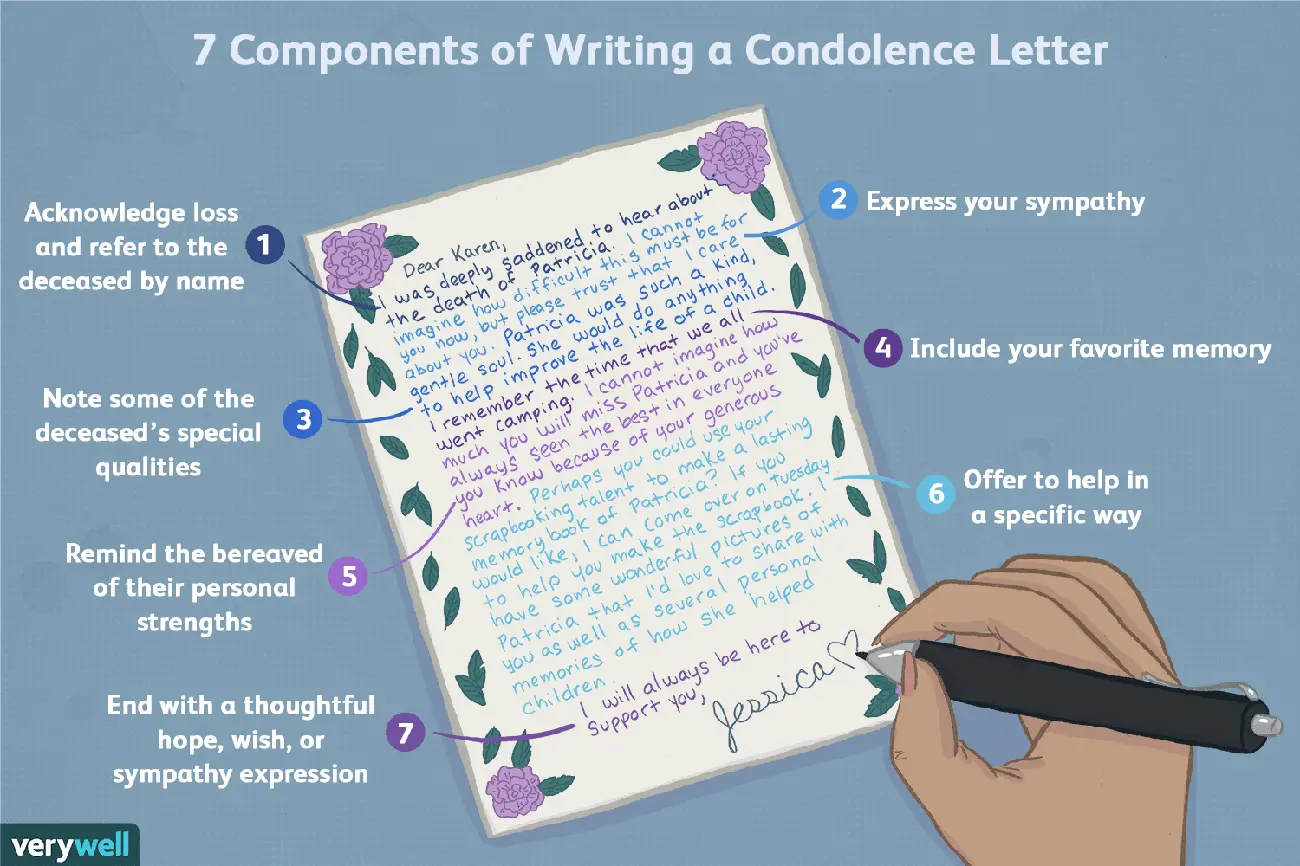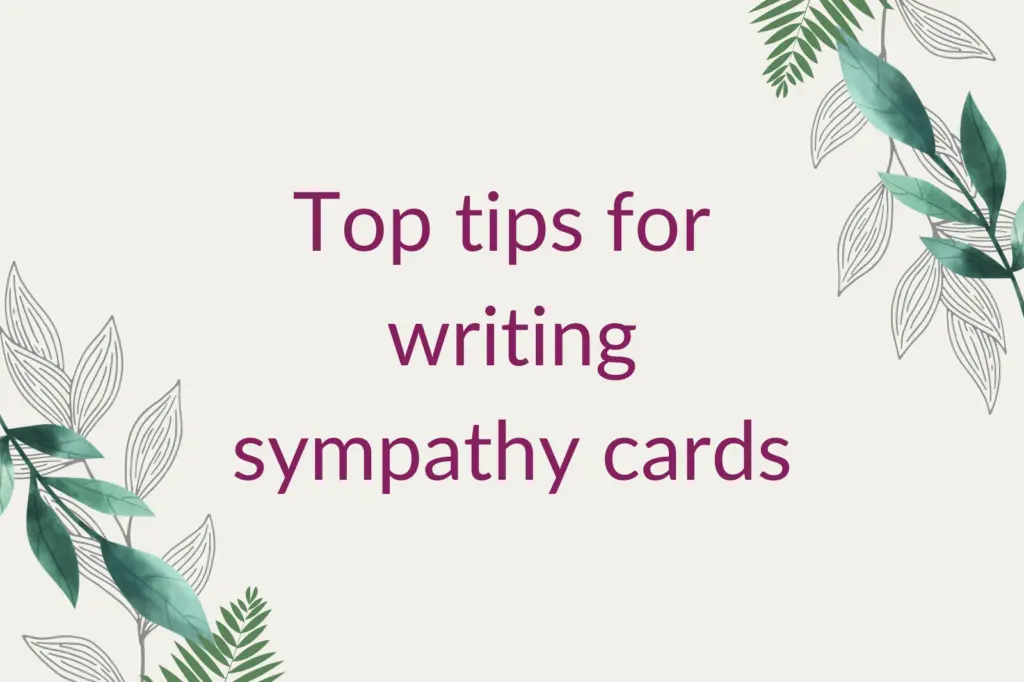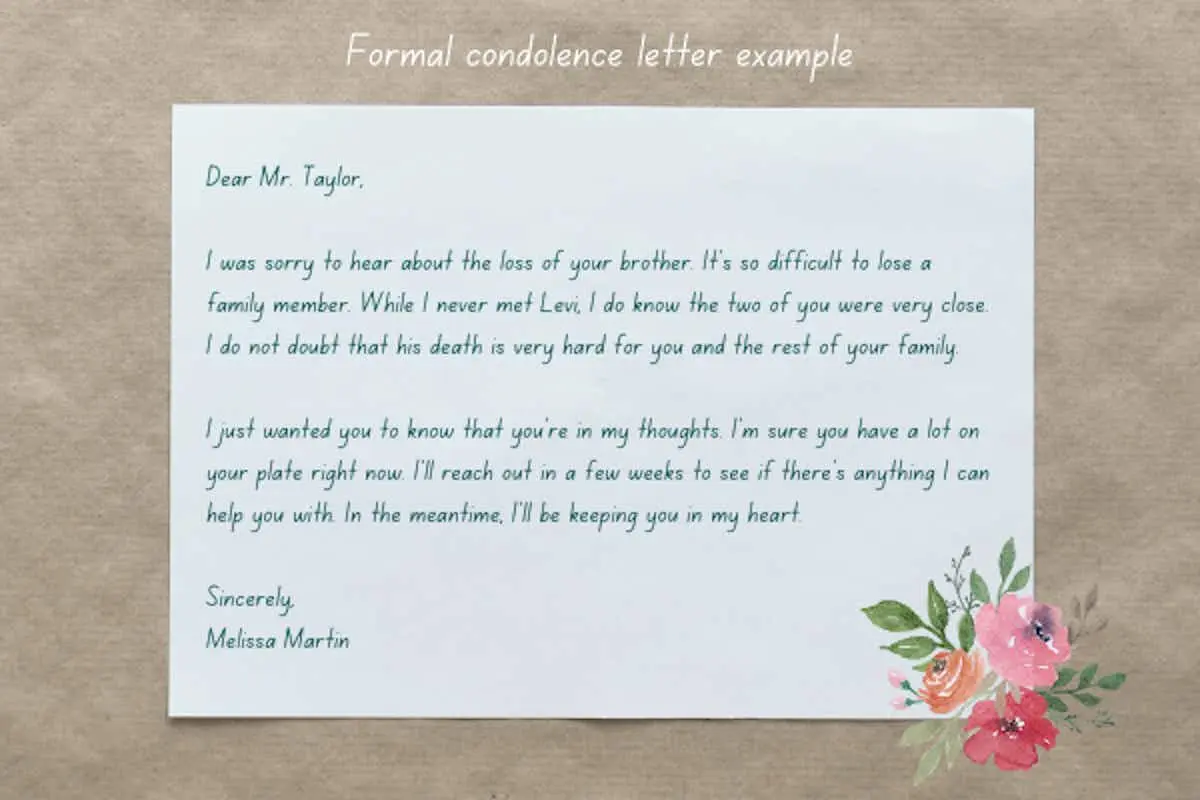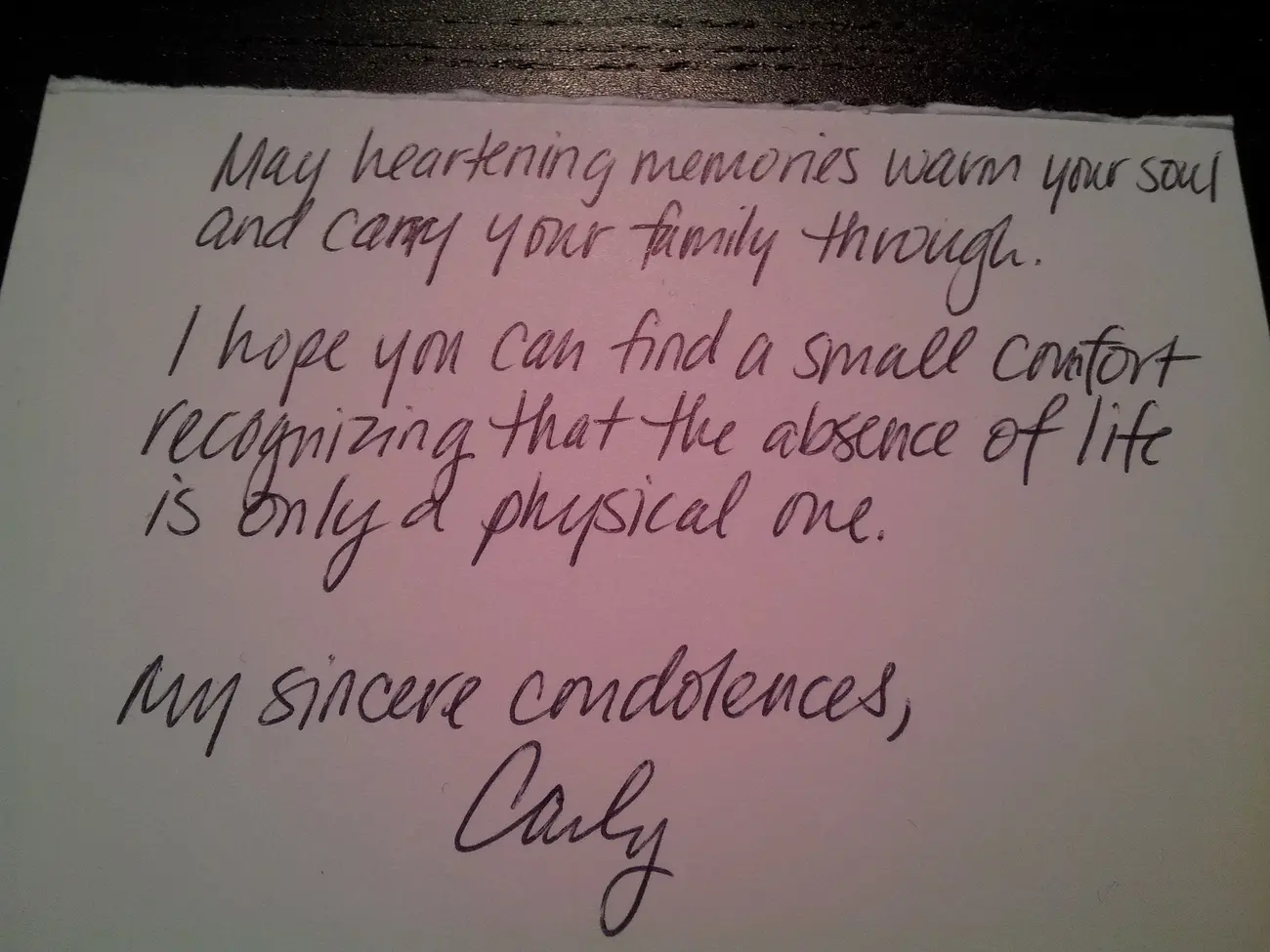Sending a text takes just seconds these days, doesn’t it? But figuring out what to write in a sympathy card carries so much more weight. It’s different.
People often keep these handwritten notes nearby. You might see them on mantelpieces or coffee tables for weeks. They become lasting reminders that someone cared during a really tough time.
Even the simplest words of comfort can mean the world to someone grieving. Honestly, lots of us find it tricky to choose the right words. Especially when you’re faced with a blank sympathy card just staring back at you!
We worry about saying the wrong thing. Or maybe not getting our feelings across properly. It’s tough.
This guide is here to help. We’ll look at how to write genuine, heartfelt sympathy messages that really connect. You’ll learn what to write in a sympathy card to show you care, whether someone has lost a parent, a child, or another special person.
The words you choose can offer real comfort and support, right when they need it most.
Understand the Purpose of a Sympathy Card

Image Source: Verywell Health
“What we have once enjoyed we can never lose. All that we love deeply becomes a part of us.” — Helen Keller, Author, activist, and lecturer; renowned for her advocacy for people with disabilities
Let’s be honest, a sympathy card is much more than just folded paper with some printed words. These cards are real, physical proof that others see the pain someone is going through. They show people want to help when a loved one is lost. Understanding this deeper purpose helps us write messages with more meaning.
Why sending a card matters
When people are grieving, they need to know others are thinking of them. Sympathy cards do exactly that. A physical card is a lasting reminder of care. It’s different from a quick digital message that gets lost easily.
Studies show these cards give people real proof of support. This helps them feel less alone while they’re grieving.
You know what surprised me? People often keep these cards for years. Some even pass them down through the family! This really shows how much emotional value they hold. These treasured cards capture thoughts about the person who died. They help keep memories alive for future generations.
Timing matters too. Try to send your handwritten note within a few weeks of hearing the sad news. This timing usually works best. It’s not too soon, when the family might still be in shock. But it’s not so late that it feels like an afterthought.
Sympathy cards actually help in two ways. They support the person grieving, and they also help the person writing the card. Think about healthcare workers who care for patients who pass away. Writing cards helps them create “a humanist culture.” They find a sense of closure. It helps them remember their time with the patient and their family. This sharing can even help stop burnout for carers.
Emotional impact on the grieving person
A thoughtful sympathy message offers comfort long after it’s read. There’s even clinical proof! Condolence cards can actually lower the risk of long-lasting grief. They can also reduce symptoms of depression, anxiety, and PTSD for family members left behind.
Sympathy cards give several psychological boosts to people dealing with loss:
- They show that feeling sad or emotional after a death is normal and okay.
- They remind people of the special connection they shared with the person who died.
- They let family members know that support is still there for them.
- They offer reassurance, help with closure, and build trust in their support network.
People who’ve lost someone often say receiving sympathy cards made them feel their sadness was “seen” and understood. This feeling is especially important for young adults going through loss. They can often feel very alone, without many support resources that feel right for them. Sometimes, the formal language in traditional sympathy cards doesn’t quite connect with younger people.
It’s true that cards don’t always feel helpful to everyone. Some studies found they can sometimes cause doubt, bring back sad feelings, or create stress about needing to reply. My main advice? Focus on showing genuine support. Don’t worry too much about trying to ‘fix’ their grief.
Sympathy cards are meaningful because they acknowledge the loss in a real way. As one grief expert said, “Grief isn’t something that can be fixed… all someone needs is for someone to acknowledge their pain”. This simple act shows grieving people they haven’t been forgotten or avoided. Their loss feels real and valid. They know they don’t have to face it all alone.
Looking at hundreds of sympathy cards, research shows “sympathy” is the main message. People often write “deepest sympathy.” This suggests we need sympathy more during grief than at other times. Even if you worry about saying the wrong thing, sending an imperfect message is usually better than staying silent. Silence can make someone feel even more isolated.
Set the Right Tone Before You Write

Image Source: The Pen Company
Okay, figuring out what to write in a sympathy card actually starts before your pen hits the paper. You just need to pause and think carefully about your words. The goal is to find the right balance. You want to acknowledge the grief without accidentally adding to the pain.
As a stationery expert rightly says, “Handwritten notes are one of the most personal forms of communication… a card is a keepsake. It will be kept and reread.” Your words matter.
Choosing the right emotional tone
Getting the emotional tone right is key. You want your sympathy message to show real empathy and feel genuine. Your words probably can’t take away someone’s pain. But they can offer real comfort during such a hard time.
Empathy and compassion should be the heart of every message you write.
Sincerity makes all the difference. Trust me, real feelings connect much better with grieving people than perfectly crafted phrases or poetic lines. Messages that come straight from the heart give more meaningful support than trying too hard to sound clever.
The best sympathy messages strike a careful balance. They comfort without being overwhelming. Your tone should aim to be:
- Compassionate but not overly dramatic.
- Supportive without pretending you understand exactly how they feel.
- Personal but not making it all about your own feelings.
- Respectful of where they are in their grieving journey.
Grief specialists point out that everyone processes grief differently. Think about the person you’re writing to. Consider their connection to the person who died, and their personality, when you choose your tone.
Avoiding common writing mistakes
Good intentions are great, but sometimes certain phrases can hurt more than they help. It’s best to skip clichés and generic sayings. These can sometimes feel fake or dismiss the person’s grief.
Watch out for these common mistakes that can weaken your sympathy message:
- Comparing grief: Avoid saying “I know how you feel.” Grief is so personal, and this can make their unique loss feel smaller.
- Using religious lines: Unless you’re certain of their beliefs, skip things like “They’re in a better place.” Faith-based comments might not align with their views.
- Offering vague help: Instead of “Let me know if you need anything,” try offering something specific. Maybe suggest bringing over a meal or helping with errands.
- Focusing on silver linings: Comments like “Everything happens for a reason” or trying to find a bright side can feel dismissive of their current pain.
- Making it about you: Remember, the sympathy card is for them. Focus on their feelings, not your own past experiences with loss.
Words chosen carelessly can have a big impact. A grief expert highlights, “During this time of grief, it’s vital to find the right words that offer comfort and support.” This shows why your tone is so important. Thoughtful messages give real comfort. Careless words might unintentionally add to their hurt.
The main aim isn’t perfection. It’s about showing you genuinely care. The most meaningful sympathy messages come from real empathy, not from worrying about finding perfect words or writing elegantly. Knowing what to write in a sympathy card is more about heart than grammar.
Start with a Simple and Sincere Opening

Image Source: JoinCake
Writing that very first sentence in a sympathy card can feel tricky, can’t it? Your opening words set the tone. They reach out gently to acknowledge the loss without being overwhelming for someone who’s grieving.
Etiquette experts suggest that your words of condolence should show genuine sympathy. They should bring immediate comfort to the person reading them. Thinking about what to write in a sympathy card starts here.
Examples of respectful openings
Simple, heartfelt sentences that directly mention the loss often work best as openings. Trust me, your real feelings matter much more than fancy words.
These opening lines have brought comfort to many:
- “I am so sorry for your loss.”
- “Please accept my deepest sympathy on the loss of your [relationship, e.g., mother/friend].”
- “My heart is with you during this sad time.”
- “With heartfelt sympathy.”
- “I was so saddened to hear about your loss.”
- “My deepest sympathy goes out to you at this difficult time.”
Stationery experts say these direct openings build a good base for the rest of your message. Research actually shows shorter opening lines work better. They leave space for your own personal thoughts that come next.
Your opening should never cause extra pain. A grief specialist put it simply: “Focus on the griever and his or her feelings”. Messages that focus on the person reading the card create an emotional connection straight away.
People appreciate sympathy card openings that acknowledge their loss without trying to minimise it or explain it away. A study on bereavement communication found people valued messages that recognised their pain, without trying to ‘fix’ it.
When to mention the deceased by name
Using the person’s name in your opening makes the connection more personal. It honours their unique identity. Grief counsellors often recommend this. It confirms you’re thinking about the specific person, rather than just talking about death generally.
You could write: “I am so sorry to hear that [Name] has passed away” or “I was deeply saddened to learn about [Name]’s passing”. This direct approach shows respect for both the person who died and their loved ones.
Whether you use the name right at the start, or a bit later, can depend on a few things:
- Your relationship with the person who died.
- Your relationship with the person receiving the card.
- The circumstances around the death.
- Any cultural considerations.
Using their name straight away often feels more genuine if you knew the person well. A sympathy card expert suggests: “I am so sorry to hear about [Name]. They were such an incredible person and I will never forget [share a memory or quality]”.
The name holds power wherever you place it in the card. As one bereavement specialist notes, the card is a keepsake that “will be kept and reread”.
Not sure about using the name? You can mention the relationship instead: “Please accept my deepest sympathy for the loss of your father/sister/friend”. This still honours the connection respectfully, especially if you didn’t know the person who died personally.
Your opening words lay the foundation. They start a meaningful message that people often keep and read again during their grief journey. Knowing what to write in a sympathy card‘s opening is about simple, sincere care.
Add a Personal Touch to Your Message

Image Source: The Floradelphian – WordPress.com
“Like a bird singing in the rain, let grateful memories survive in a time of sorrow.” — Robert Louis Stevenson, Scottish novelist, poet, and essayist
Honestly, the best sympathy cards offer more than just standard phrases. Adding personal touches makes your message really connect and comfort someone.
A personalised message shows you’ve taken the time. It shows you thought about the person who died and your connection to the person grieving. As one expert says, “really, the most important thing when writing one is to keep it real.”
Sharing a memory or quality of the deceased
Sharing memories or special qualities can bring real comfort. It helps the grieving person know their loved one made a difference and won’t be forgotten.
Many people who are grieving really value cards that include:
- Stories about the person they might not have heard before.
- Specific qualities that made the person special.
- Simple observations about what made them unique.
“Share a fond memory if you have one,” advises a grief specialist, “especially if the card receiver has never heard it… Anything that stands out to you will be special, even if it seems small.”
When you mention memories or qualities, try to be specific but keep it brief. For example:
- “Your dad’s amazing spirit really lives on through you. Sending you love.”
- “Your mother will always stay in our hearts and memories.”
- “I’ll always cherish the wonderful memories I have of your dad. He will be missed so much.”
Even if you didn’t know the person who died very well, you can still acknowledge their impact through the person you’re writing to:
- “I didn’t get the chance to know your mum well, but I know she must have been special to raise someone as wonderful as you.”
Remembering the person can happen in simple ways too. An expert suggests: “Share how you will continue to remember… ‘I know Ralph loved key lime pie. Whenever I see it on the menu I’ll be sure to order it and think of him.'” Thinking about what to write in a sympathy card often involves these small, personal touches.
Expressing your support without giving advice
Your sympathy card should focus on the grieving person’s needs. Try not to push your own views or give unsolicited advice. Avoid phrases like “I know how you feel.” These can accidentally dismiss their unique experience.
As a bereavement specialist puts it clearly: “Never make it about you and your experience with loss. Focus on the griever and his or her feelings.”
Your words can’t fix their pain, but they can show you care:
- “Nothing I say can take away the pain you’re feeling. I just want you to know I care about you and share in your sadness.”
- “I know I can’t make your pain go away, but I want you to know I’m here. I can offer a shoulder to cry on, an ear to listen, or anything else you might need.”
Offer specific help instead of vague phrases like “let me know if you need anything.” Vague offers can actually put more pressure on someone who’s already overwhelmed.
Try offering real, practical help:
- “I’ll give you a call next week to see when might be a good time to bring over a meal.”
- “You have so much on your mind and heart right now. We hope it helps to know Kevin and I will take care of the garden for as long as you need.”
We write these sympathy messages without expecting anything back. A grief counsellor explains the key is helping the bereaved know “there are no expectations… they don’t have to worry about hurting your feelings.”
The most helpful sympathy messages understand that grief is complex. They don’t try to fix it. They simply remind the person grieving that they aren’t alone on their difficult journey. Deciding what to write in a sympathy card is about showing up for them, gently and supportively.
Offer Help or Support Thoughtfully

Image Source: Kudoboard
A sympathy card’s real value often comes from offering genuine help to someone who’s grieving. Grief specialists always say that practical support makes a massive difference for people dealing with loss.
But how we offer that help really matters. A lot.
How to offer help without being vague
You know that common phrase, “Let me know if you need anything”? While it comes from a good place, it actually puts a bit too much pressure on the person grieving. They might not feel comfortable asking for help, or even know what to ask for.
Bereavement experts suggest making clear, direct offers instead. Something that just needs a simple ‘yes’ or ‘no’ answer works best.
Offering help proactively shows you really care, much more than vague offers do. The person grieving likely feels overwhelmed already. They shouldn’t have the extra burden of figuring out what help they need from you. Simple, clear offers take away that stress during such an emotional time.
Just make sure you can follow through on any help you offer! Breaking a promise to someone feeling vulnerable can damage trust. Only offer help that genuinely fits your time and ability.
Examples of specific offers of support
Here are some thoughtful, specific ways to offer help that grief specialists recommend thinking about when deciding what to write in a sympathy card:
- “I’d like to bring dinner over next Tuesday – would 6pm work for you all?”
- “I’m free this Friday morning if you’d like me to watch the kids while you handle arrangements.”
- “Happy to walk the dog every afternoon this week, give you one less thing to worry about.”
- “I’m popping to the supermarket tomorrow. Can I grab some essentials for you?”
- “Let me take care of the lawn for the next month while you focus on things.”
Offering regular, scheduled support can show even deeper care: “I’m always home on Sunday afternoons. Happy to have the children over any week you need a break.”
Remember, support often means more in the weeks and months after the funeral. Help can sometimes fade away once the initial services are over. Maybe make a note in your calendar to check in regularly. Show you care beyond the immediate period of loss.
The best sympathy messages often mix emotional support with practical help. This shows the person grieving they truly have someone beside them as they start navigating their difficult journey.
Close with Warmth and Care
The final words in your sympathy card leave a lasting impression. They’re your last chance in the card to offer comfort. How you end your message can make all the difference between a card feeling a bit stiff and one that truly soothes.
Knowing what to write in a sympathy card includes finding the right closing.
Sympathy closings that feel genuine
The closing you choose should match your relationship with the person receiving the card. It should always show warmth and support. A thoughtful ending shows you’ve considered their feelings. It gives a sense of closure and comfort during a tough time.
Your closing words remind grieving people they aren’t facing their sadness alone.
Think about your relationship when picking the right closing:
- For close friends/family: “With love,” “Lots of love,” “With all our love and support”
- For supportive messages: “I’m here for you,” “Wishing you peace,” “Sending love and strength”
- For respectful messages: “With caring thoughts,” “In caring sympathy,” “With our deepest condolences”
- For ongoing support: “With warm regards,” “You’re in our thoughts,” “Thinking of you”
The closing you choose creates that final connection. It reassures the grieving person that they have support around them.
When and how to follow up after the card
Grief doesn’t just stop when the sympathy cards do. Following up after sending your card shows ongoing care. It shows you understand that grief doesn’t have a time limit – it’s often a lifelong journey.
These meaningful moments are worth marking on your calendar to check in:
- The anniversary of their loved one’s death.
- Birthdays, holidays, and other special occasions that might be hard.
- A few weeks after the funeral, when other support might have dropped off.
You can reach out with a simple phone call, a visit (if appropriate), an email, or even another card. Just let them know they’re still in your thoughts. Reassure them that feeling sad is perfectly okay.
Your follow-up could also include more practical help. Maybe brighten their day with flowers, cook a meal, help with chores, or gently invite them to social events as they feel ready. Even if they say no at first, the offer itself shows you care.
Final Thoughts: Writing From the Heart
So, there we have it. Sending a sympathy card is honestly one of the kindest ways to support someone through grief. Figuring out what to write in a sympathy card might feel daunting at first, but remember – sincere, simple words of care matter much more than finding the “perfect” phrase.
Heartfelt messages that acknowledge the loss, perhaps share a gentle memory, or offer specific help bring lasting comfort. Your genuine presence on paper, showing you’re there for them without trying to ‘fix’ their pain, helps people feel less alone in their sadness.
These handwritten notes often become treasured keepsakes. They help people cope long after the initial shock has passed. The thoughtful words, personal memories, and real offers of help act as tangible reminders of support.
Grief doesn’t follow a schedule. Checking in weeks or months later shows you understand healing takes time. Those small gestures of ongoing support mean the world to someone missing their loved one. Knowing what to write in a sympathy card is really about showing you care, simply and genuinely.
FAQs: What to Write in a Sympathy Card
Got a few more questions about what to write in a sympathy card? No worries, here are some common ones answered simply:
Q1. What are some simple yet sincere ways to start a sympathy card?
Start with straightforward, kind words like “I am so sorry for your loss” or “My deepest condolences to you and your family.” These simple openings show you care without being overwhelming.
Q2. How can I make my sympathy message more personal?
Try sharing a specific, gentle memory or a lovely quality of the person who passed away. For example, “I’ll always remember John’s infectious laugh” or “Mary’s kindness really touched so many.” This personal touch shows you genuinely cared.
Q3. Is it okay to offer help in a sympathy card?
Yes, absolutely! But be specific. Instead of just saying “Let me know if you need anything,” try something concrete like “I’d like to bring dinner over next Tuesday. Would 6 pm work for you?” This makes it much easier for the grieving person to accept your kind offer.
Q4. How should I close a sympathy card?
Choose a closing that feels right for your relationship with the person. For close friends or family, “With love” or “Sending love and strength” is warm. For others, “With caring thoughts” or “In deepest sympathy” are respectful and appropriate choices.
Q5. Should I follow up after sending a sympathy card?
Yes, following up is a lovely way to show ongoing support. Grief lasts a long time. Maybe make a note to check in on meaningful dates like the person’s birthday or the anniversary of their passing. A simple call, text, or another card shows you haven’t forgotten and can mean a lot. Thinking about what to write in a sympathy card can also apply to these follow-up messages.



